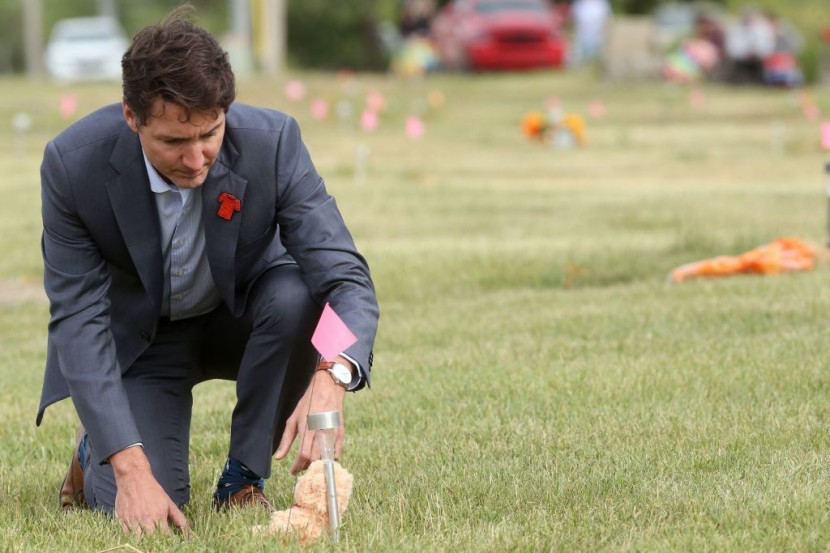
Canadian officials on Tuesday revealed they found more unmarked graves on the grounds of an Indigenous residential school in the southern Gulf Islands, making it the latest in a series of devastating discoveries since May.
In a newly released statement, the Penalakut Tribe said they found more than 160 undocumented and unmarked graves off the British Columbia coast where the Kuper Island Indian Industrial School previously stood.
Mass Unmarked Graves
"We understand that many of our brothers and sisters from our neighboring communities attended the Kuper Island Industrial School. We also recognize with a tremendous amount of grief and loss, that too many did not return home," the tribe's statement read. "It is impossible to get over acts of genocide and human rights violations. Healing is an ongoing process, and sometimes it goes well, and sometimes we lose more people because the burden is too great."
The Kuper Island Indian Industrial School operated from 1890 until 1969. It was initially run by the Roman Catholic Church before the Canadian federal government took over. The school ceased operations in 1975 and was demolished five years later.
Tuesday's grim findings are the latest discovery in recent months. In June, a ground-penetrating radar found at least 182 human remains in several unmarked graves at the site of the former St. Eugene's Mission School. The radar found that some of the remains were buried in graves only four feet deep.
Read Also: Trump Org CFO Allen Weisselberg Dismissed From Senior Positions But Will Remain in the Company
According to a statement released by the Lower Kootenay Band, the remains found were believed to belong to members of the Bands of the Ktunaxa nation, First Nations communities and the community of aqam, as reported by CNN.
Hundreds of Indigenous People
An estimated 100 Lower Kootenay Band members attended St. Eugene's between 1912 and the early 1970s. At the time, the Roman Catholic Church operated the school where they housed indigenous children ages 7 to 15.
In late-June, Cowessess First Nation Chief Cadmus Delorme announced they discovered the unmarked graves of as many as 751 people at the site of the former Marieval Indian Residential School in Saskatchewan.
The Marieval Indian Residential School was founded in the 1890s and was run by Catholic missionaries until the federal government took over in 1969. It was later turned over to the Cowessess First Nation in 1987 until it closed in the 1990s, according to The Washington Post.
It is unclear how the indigenous children died at the school. Many suffered from disease outbreaks, while some faced sexual and physical abuse and violence. Former students recounted experiences wherein young girls were impregnated by priests, as reported by The New York Times.
The series of chilling discoveries began in May when the Tk'emlups te Secwepemc First Nation said they discovered the remains of 215 children on the grounds of the Kamloops Indian Residential School, which operated from 1890 until the late 1970s. The remains, which have been buried for decades, included children believed to be as young as 3.
From the 19th century until the 1970s, at least 150,000 indigenous children were forced to attend Christian schools where they suffered abuse for speaking their native languages.
Related Article:








